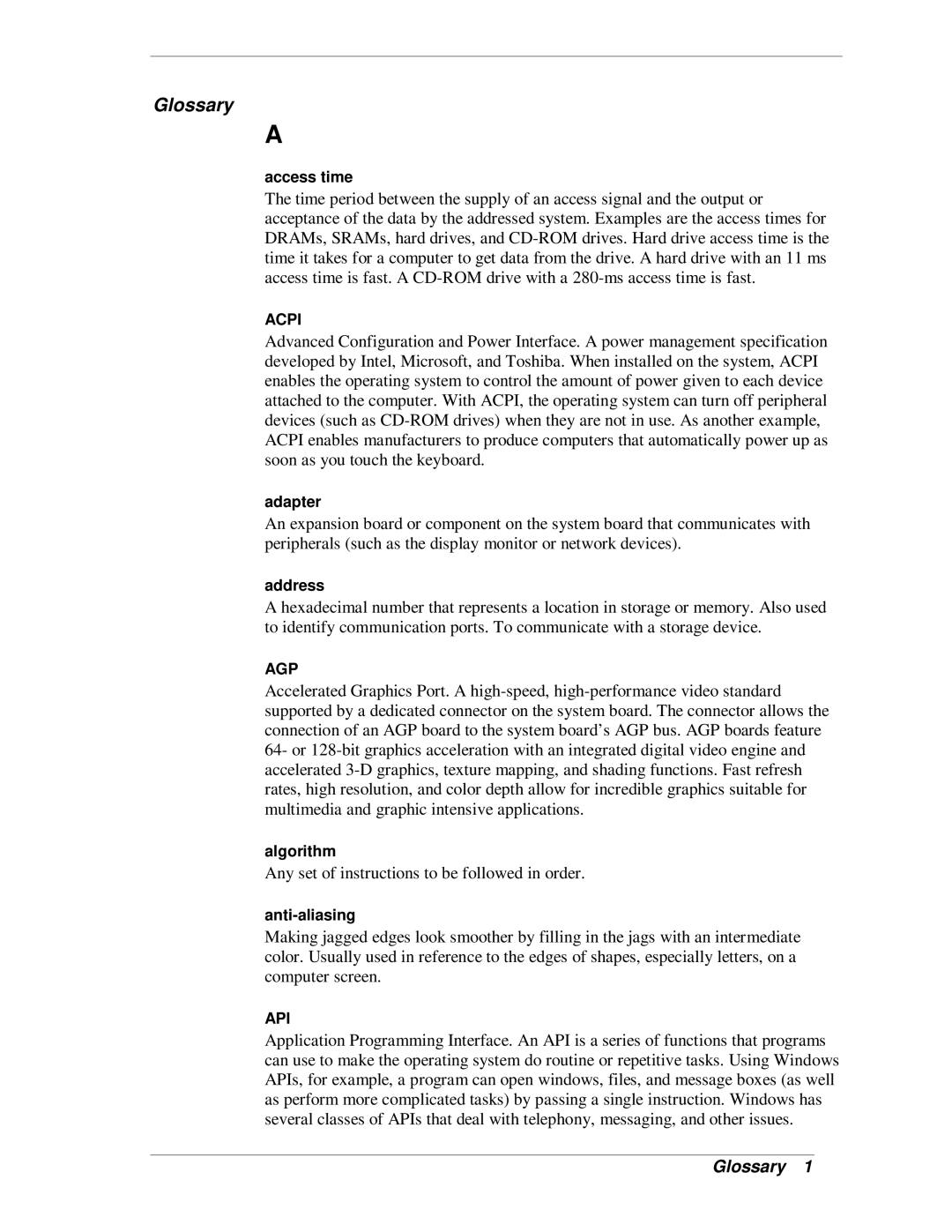
Glossary
A
access time
The time period between the supply of an access signal and the output or acceptance of the data by the addressed system. Examples are the access times for DRAMs, SRAMs, hard drives, and
ACPI
Advanced Configuration and Power Interface. A power management specification developed by Intel, Microsoft, and Toshiba. When installed on the system, ACPI enables the operating system to control the amount of power given to each device attached to the computer. With ACPI, the operating system can turn off peripheral devices (such as
adapter
An expansion board or component on the system board that communicates with peripherals (such as the display monitor or network devices).
address
A hexadecimal number that represents a location in storage or memory. Also used to identify communication ports. To communicate with a storage device.
AGP
Accelerated Graphics Port. A
algorithm
Any set of instructions to be followed in order.
Making jagged edges look smoother by filling in the jags with an intermediate color. Usually used in reference to the edges of shapes, especially letters, on a computer screen.
API
Application Programming Interface. An API is a series of functions that programs can use to make the operating system do routine or repetitive tasks. Using Windows APIs, for example, a program can open windows, files, and message boxes (as well as perform more complicated tasks) by passing a single instruction. Windows has several classes of APIs that deal with telephony, messaging, and other issues.
